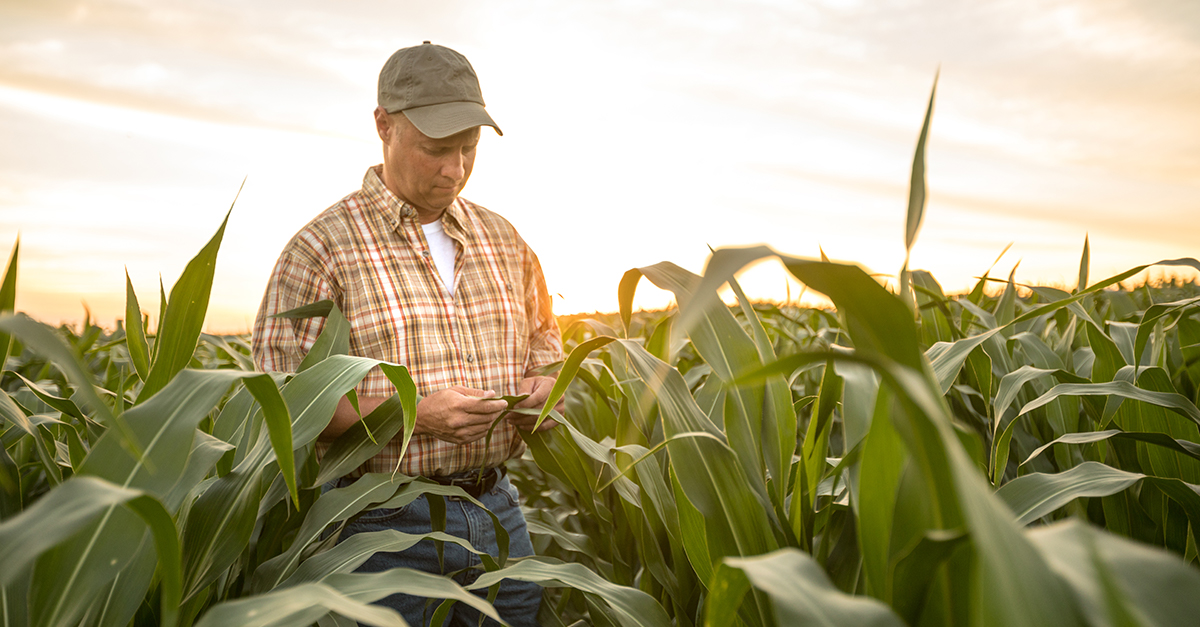Monsanto Defines New Growth Layers For R&D Pipeline
Monsanto’s pipeline offers rich growth layers beyond breeding and biotechnology that add incremental growth opportunities going forward, Chief Technology Officer Robb Fraley, Ph.D., told investors Wednesday at the Goldman Sachs Basic Materials Conference 2012. Fraley discussed new technologies with the potential to create real commercial value in Monsanto’s pipeline, including the expansion of the Integrated Farming Systems portfolio and the announcement of a new agricultural biologicals platform featuring BioDirect technology, which represents Monsanto’s first step into biological products. He also touched on emerging global opportunities, highlighting the company’s capital investment in Central and Eastern Europe as well as the continued ascension of agriculture in Brazil and Argentina, all of which are expected to drive Monsanto’s growth over the next several years.
“Our pipeline has evolved significantly from where it was just a few years ago and today it is more exciting and robust than ever,” Fraley said. “Not since we developed the first Roundup Ready trait have we seen such promising categories of value emerging from our pipeline. We’re exploring new areas of technology and new areas of the world, and all roads lead to opportunity for both Monsanto and our farmer customers as we work together to improve yields.”
Monsanto Introduces Ag Biologicals Platform, BioDirect Technology
Fraley introduced the latest addition to the company’s R&D pipeline, early development of ag biological products through Monsanto’s new BioDirect technology. BioDirect brings Monsanto’s expertise in plant genomics to chemistry for the first time, enabling products that could provide new options for sustainable pest or virus control.
Agricultural biologicals are typically topical or seed treatment products that are produced from natural materials and used to complement or replace agricultural chemical products, Fraley said. These products make up a growing market segment, Fraley noted, and today represent roughly $1.7 billion in sales each year.
Fraley said BioDirect is a natural extension of Monsanto’s work in advanced breeding and biotechnology, as it draws on an extensive knowledge of genomics. The BioDirect technology utilizes the application of molecules that are in nature, like RNA, to diminish the production of specific proteins in the target organism.
BioDirect technologies eventually could be used to identify new opportunities for current herbicides, create better insect control options, and offer new virus-control tools. Fraley also cited recent transactions that have complemented and helped accelerate Monsanto’s existing work in this space.
“BioDirect technology has the potential to be one of the most exciting advancements for agriculture that I’ve seen in my career,” Fraley said. “By working with a plant’s own naturally-occurring processes, we have the potential to create products that are very precise and specific in how they work and may require smaller and fewer applications than current agricultural products. That’s better for farmers, more sustainable and consistent with our vision to create products that enable farmers to produce more and conserve more.”
Precision Planting Strengthens Monsanto’s Vision For Integrated Farming Systems
Fraley also cited the company’s progress as it builds out its Integrated Farming Systems portfolio, noting today’s announced plan to acquire precision agricultural engineering and planting technology leader Precision Planting Inc. Monsanto’s planned Integrated Farming Systems offering would provide science-based agronomic seed prescriptions with next-generation precision equipment, helping farmers increase yield potential and reduce risk.
“I’ve been in farming my whole life, and welcoming the Precision Planting team to Monsanto is a real highlight,” Fraley said. “By bringing together Precision’s planting technology with our data and breeding expertise, we expect to set ourselves apart with our ability to deliver specific on-farm prescriptions with the tools to use them for our farmer customers and I believe we will greatly improve crop yields.”
Growth, Continued Investment In Latin America, Eastern Europe
Fraley noted the company’s technology investment reaches beyond the United States to growing agricultural powerhouses like Brazil and Argentina and emerging leaders like Eastern Europe.
In Brazil, Monsanto is readying for the commercial launch of its INTACTA RR2 PRO soybeans, the first product the company has developed specifically for an international market. INTACTA RR2 PRO brings insect protection to the Roundup Ready 2 Yield product that has delivered yield increases to U.S. farmers along with glyphosate tolerance. The product has been well-received in on-farm trials and has already been tested by 500 farmers in Brazil with successful results. It is expected to be commercialized pending the deregulation process for Brazil’s main soybean importers.
Argentina also is expected to have more agricultural technology choices in the future, Fraley said, given good progress has been made on a new payment system between the company and Argentina farmers that encourages Monsanto’s continued investment in that market. With continuing progress, Fraley said he would expect the company to introduce Ground Breakers trials for INTACTA RR2 PRO in Argentina for fiscal year 2014. The company also has invested capital in corn production for Argentina.
Fraley discussed oversea growth prospects as well, noting the company’s planned capital investment in an expansion of its corn seed production facilities in Central and Eastern Europe.
“We have a real yield opportunity in Eastern Europe, which has rich, black soil and large tracts of uncultivated, arable land,” Fraley said. “Today, corn yields are about half of what they are in comparable areas of Western Europe. The area is well-positioned geographically as an exporter to the rest of Europe, North Africa and the Middle East and has great potential to really boost productivity with better genetics in corn and canola.”
Fraley said if yields in Eastern Europe can be improved to the level of Western Europe, farmers in the East could produce enough food for 500 million people – and two key components of increased yield are better seed and agronomic practices.






